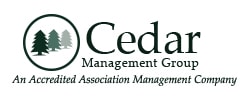HOA capital improvements, when executed correctly, can greatly enhance the quality of life in a community and the properties within it. As every homeowner and association member knows, a vibrant community is one that gracefully changes and evolves over time. One of the most direct ways to keep a community well-maintained and livable is by funding things like repairs, new amenities, or even new community features. Projects like these will often exceed the scope of repair and maintenance.
The Importance of Funding HOA Capital Improvements
For cases like these, the HOA management needs to come up with a plan for funding HOA capital improvements.
Should you fund HOA capital improvements in the first place? It’s a question that should be considered with as much care as the improvement projects themselves.
 It’s important to understand that capital improvements, as well as the costs and risks associated with them, are an inescapable reality for any community. Community facilities will wear down and need replacing in time.
It’s important to understand that capital improvements, as well as the costs and risks associated with them, are an inescapable reality for any community. Community facilities will wear down and need replacing in time.
While your repair and maintenance can keep them in good condition for a while, they will eventually need significant repairs. Some may even need upgrades or outright replacement. Growing communities will also find themselves in need of new amenities, as well. The HOA board may find themselves having to address demands for a community pool, a new covered walkway, or a nicer high-rise roof.
Meeting these demands is an important part of maintaining satisfaction in a community. Who will be a better manager for these projects than the HOA board?
HOA capital improvements are the repairs, upgrades, and new construction undertaken by the homeowners association. Every HOA board should be equipped to finance and manage these kinds of projects. There’s a line between routine repair and maintenance costs, and capital improvement costs—so how do you organize your finances for both cases?
What Are Capital Improvements?
 One technical definition of capital improvements describes them as a permanent change in community property. It may involve placing down and additional permanent structure on it. This means that putting in an entirely new community pool where there was none before certainly counts as a capital improvement—so does putting up a mailbox.
One technical definition of capital improvements describes them as a permanent change in community property. It may involve placing down and additional permanent structure on it. This means that putting in an entirely new community pool where there was none before certainly counts as a capital improvement—so does putting up a mailbox.
As a general rule, a capital improvement is any improvement or a new addition to a property that you can expect to see or use for longer than a year. That’s according to the Internal Revenue Service (IRS) definition of capital improvement, which also defines the rules for deductible repairs.
The benefits of HOA capital improvements are not limited to the addition of new facilities. While a new mini-park or a playground obviously falls under capital improvement, so does a wide range of upgrades and repairs. For instance, installing a new filtration system for the community pool counts as a capital improvement, according to the IRS. Even projects that are crucial to the safety of the community, such as the addition of expansion bolts to a structure located in an area prone to earthquakes, also count as improvements.
Why Fund Capital Improvements?
 Capital improvements, when properly developed and completed, do more than just provide new amenities to the community. The benefits of HOA capital improvements can also be felt when a community upgrades its existing facilities. These can potentially decrease maintenance and utility costs.
Capital improvements, when properly developed and completed, do more than just provide new amenities to the community. The benefits of HOA capital improvements can also be felt when a community upgrades its existing facilities. These can potentially decrease maintenance and utility costs.
An HOA board can also significantly enhance the property values in a section of the community by giving nearby homes immediate access to a community amenity. Perhaps most importantly, capital improvement projects can be used to extend the useful life of existing community property or even adapt it for new purposes.
HOA capital improvement is one of the best ways that an HOA board to make a lasting positive impact on the community for years to come.
Budgeting for HOA Capital Improvements
HOA capital improvements can be complex, costly undertakings, so it’s important for the association to be able to manage the budget for them. Most associations have several ways to get the budgeting for HOA capital improvements, so make sure to check with your association’s attorney as to which options are available to the board.
Utilize the Reserve Fund
If your HOA is managing its finances appropriately, there will be a reserve fund that should be used to finance capital improvements. This way, residents will not be bothered by the expenses. Many HOAs allocate a portion of member dues to the reserve fund with capital improvement expenses in mind, or they allocate additional resources to the reserve fund to be sure that it is always ready to support costly repairs. Be sure to verify your state’s laws regarding reserve funds to be sure your HOAs reserve fund is not underfunded, according to state guidelines.
So what are the differences between capital improvements vs reserve fund expense items? Reserve fund expenses usually cover the maintenance of existing community assets. These expenses will usually be covered in the reserve study done by the HOA board, so they are pre-approved that way. HOA capital improvements, on the other hand, will often add a new asset to the community. Thus, they will usually require the approval of HOA members before they can be started.
Take Out a Loan
 It is quite common to borrow capital in the community association industry. A bank loan will enable unit owners to pay for the construction project over an extended time and can even allow residents to pay their obligations with their annual dues without increasing their expenditures to their HOA.
It is quite common to borrow capital in the community association industry. A bank loan will enable unit owners to pay for the construction project over an extended time and can even allow residents to pay their obligations with their annual dues without increasing their expenditures to their HOA.
Since interest rates are lower, it is a good time to consider this option for HOAs. The idea is to ensure that residents, ideally, do not have to pay additional money out of pocket to support the HOA. If they have to do so, the HOA will be scrutinized on how it is allocating its funds being paid by each resident to support their operations.
Implement a Special Assessment
The least popular way of financing repairs is to initiate a special assessment. A special assessment charges additional fees to members of the community equally to finance the repair. A special assessment should be an HOAs absolute last resort when trying to finance unexpected costly repairs.
This option is something that is not popular with residents and can cause residents to bring legal action against the HOA for not managing their finances properly. Also, there may be times where residents are simply not able to afford a special assessment, particularly if it is an emergency repair that was not previously planned.
HOAs are advised to consult with their attorney before having any form of the special assessment to be sure the legal risks are worthwhile and that the special assessment is not violating any of the bylaws that residents previously agreed to when agreeing to compensate the HOA when they first purchased their properties.
Curious as to how what kind of improvement will best suit your community? We’d love to hear from you, so don’t hesitate to give us a call or leave us a message. Together, we can help your community be the best it can be.
RELATED ARTICLES:
- What Are Capital Improvements?
- HOA Terms: A Glossary Of Terminology And Definitions
- Can Homeowners Association Raise The Fees?






